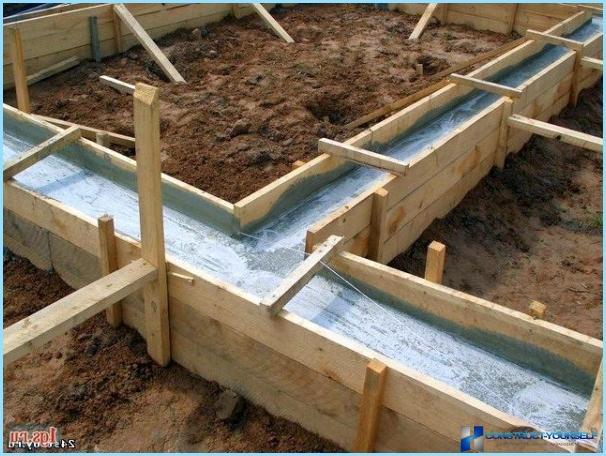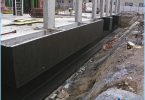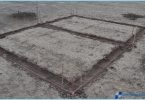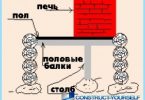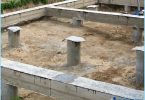It is no secret that the Foundation is the Foundation of the future house. Before building the house, you need to build a strong and reliable Foundation that can withstand the load structure and factors of natural origin.
In the case when the decision was made to build a house, it is first necessary to know how correctly and competently to build a Foundation in order to avoid many problems.
Formwork ↑
The Foundation is the Foundation of the house. Of how well it was built, depends on the strength and durability of the home.
When building the Foundation you need to decide what materials will be made formwork for him, which is of great importance for the construction of the house. Formwork is called a set of different parts, which are made of monolithic blocks. It is used for the construction of a ground part of the Foundation.
The main task of the formwork for the future the Foundation is to give the greatest possible strength throughout the constructed structure. The basic requirements in the construction of formwork should take into account the following:
- it must be able to withstand the pressure of concrete on its design.
- to maintain the desired form of the future Foundation without changes.
- the ease of use at the construction of the Foundation and an obstacle to the spreading of the filled solution.
Are the most common two types of formwork: fixed and removable types.
Permanent formwork of polystyrene foam is characterized by high speed of construction. Removable is made from metal and boards. This species is most often found on construction sites, because it is more convenient in processing, since the outer part of the finished Foundation stone.
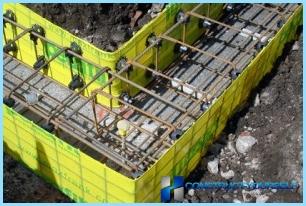
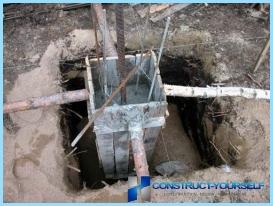
There are several types of permanent formwork: metal, concrete, polystyrene.
Metal is made from sheets of steel, the thickness of each equal to 1-2 mm. Advantages of this view are:
- The possibility of giving the sheet of any shape, which facilitates the work to create a variety of turns and bends in the future Foundation.
- improving waterproofing in General.
By cons include only high cost of material.
Concrete formwork ↑
Benefit: adds durability to the Foundation due to its properties and allows to reduce the consumed quantity of concrete.
Drawback: heavy weight plates that require the use of additional spacers for fixing.
Polystyrene ↑
The most practical option permanent formwork, characterized by ease of installation, including the possibility of making any shape. However, there is a problem with the acquisition of the necessary parts of the structure for the same radii, as a rule, the price of these items is rather high.
A removable mold considered practical views and most are available for a wide range of consumers. Mainly in the construction of this type used a wooden base, despite the fact that the market was extended and more modern materials. The undeniable advantage of this type of formwork Foundation is the fact that after the analysis of the construction material can be reused, which is extremely beneficial in the moment, when the price of purchased building materials is rather high. Thus, the ability to reuse the same materials for the Foundation allows you to partially or completely self-financing. In addition, after construction of the Foundation Board, which was used in the formwork can be further applied in the floor, or use other wooden structures. The positive qualities of the removable casing should also include ease of operation (optionally available trimming of parts or trimming to the desired size) and a limited number is necessary in the construction of building tools. However, in slip form has its drawbacks: first, there are difficulties with the curves of the future Foundation, if any. Second, pouring a large amount of concrete requires additional support on the formwork. And thirdly, there is no guarantee of the location of the installed boards in the direction straight up, from-for what the Foundation can go random.
The formwork of any type requires the Builder a lot of time and effort. In this process there are a lot of subtleties. Many inexperienced installers tend to take it immediately after pouring of the concrete, not allowing him to dry in shape. This is a huge mistake, but she’s not the only one in this process.
Before beginning work on the construction of the Foundation, you should do the following to work with the formwork:
- Make the decision about the type used formwork for him. It should be understood that a fixed design is more relevant in the case when there is a need to insulate the walls of the cap. This formwork system is essential for cold regions with prevailing frost.
- Select the materials according to the characteristics of the soil.
- To relieve there is a certain time, depending on the quality of the filled concrete and its components.
The design of the formwork of the Foundation should be set horizontally using a level. You must treat area to eliminate the various irregularities in order to avoid subsidence of the structure during grouting concrete, as well as to save, as most of the material used and the time for complete and uniform drying.
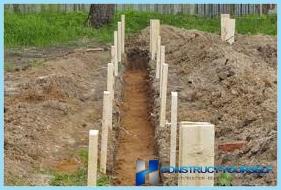
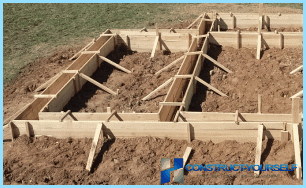
In order to avoid mistakes and unevenness of the Foundation must carefully make the measurements of the formwork, using simple and accessible tools: a plumb line for measuring the verticality, steel meter for the size of the structure and the level for the horizontal.
Only having made all the necessary measurements and eliminating even the slightest flaws, you can start pouring the concrete for the Foundation.
